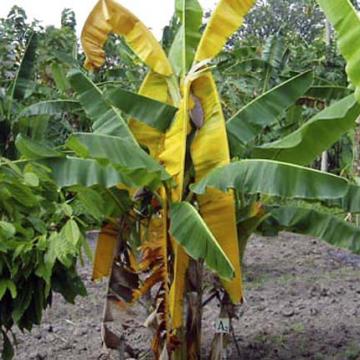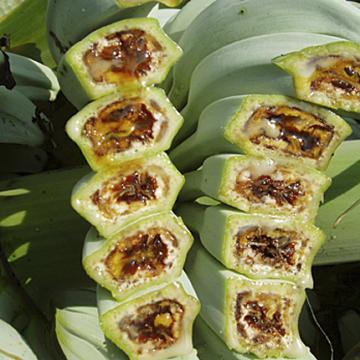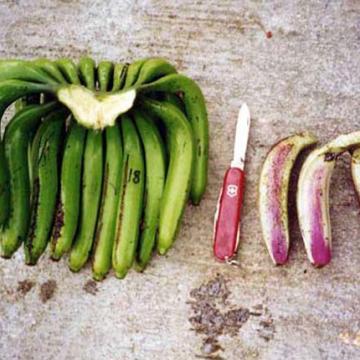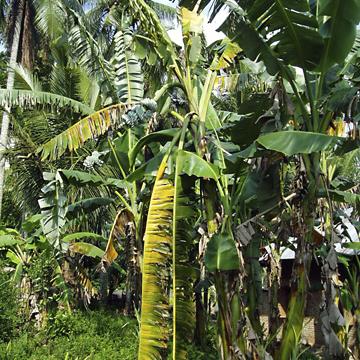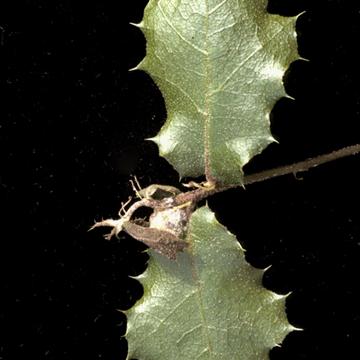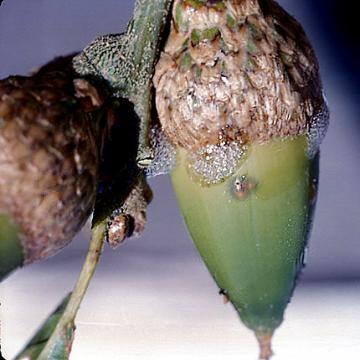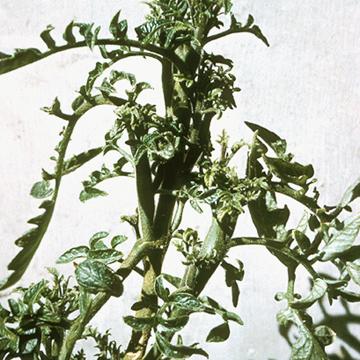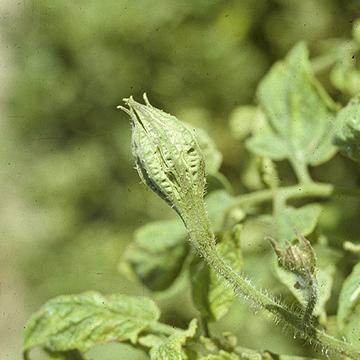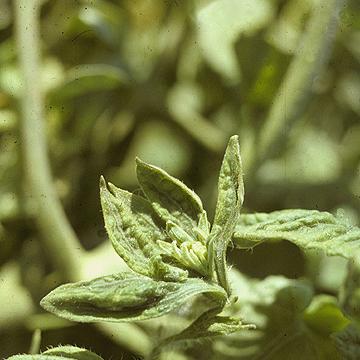DISEASE: Blood disease
HOST: Banana
Yellow leaves of dying plant.
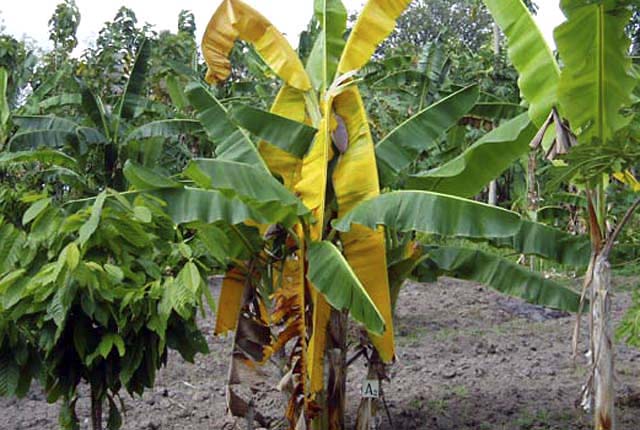
Blood disease | Banana
DISEASE: Blood disease
HOST: Banana (Musa sp.)
PATHOGEN: Ralstonia solanacearum species complex
PATHOGEN SYNONYM: Ralstonia solanacearum (Phylotype IV)
SOURCE: I. Buddenhagen
DISEASE: Blood disease
HOST: Banana
Cross sections of diseased fruit with reddish discoloration and bacterial ooze.
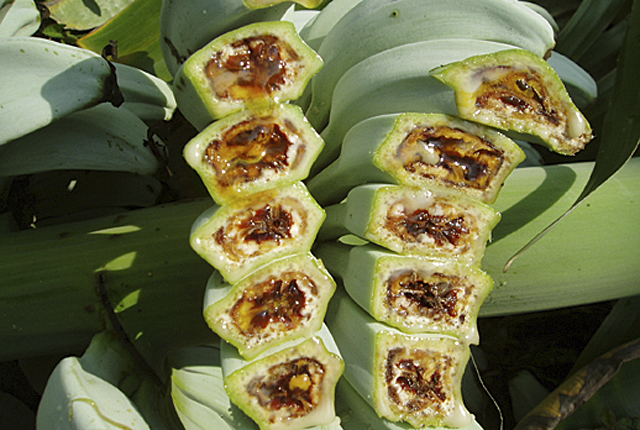
Blood disease | Banana
DISEASE: Blood disease
HOST: Banana (Musa sp.)
PATHOGEN: Ralstonia solanacearum species complex
PATHOGEN SYNONYM: Ralstonia solanacearum (Phylotype IV)
SOURCE: I. Buddenhagen
DISEASE: Blood disease
HOST: Banana
Longitudinal sections (right) exposing reddish brown discoloration of infected fruit.
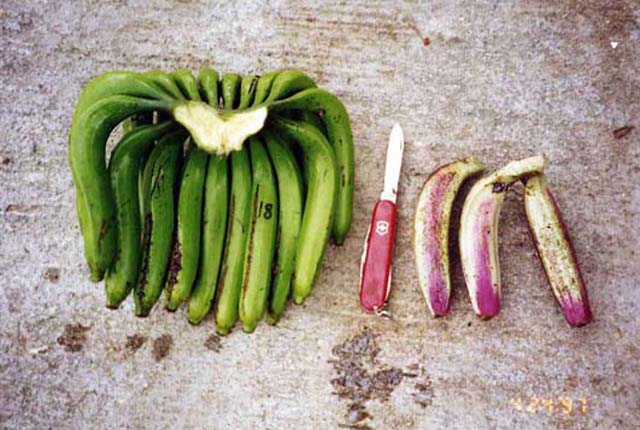
Blood disease | Banana
DISEASE: Blood disease
HOST: Banana (Musa sp.)
PATHOGEN: Ralstonia solanacearum species complex
PATHOGEN SYNONYM: Ralstonia solanacearum (Phylotype IV)
SOURCE: I. Buddenhagen
DISEASE: Blood disease
HOST: Banana
Diseased plant with wilt and yellowing of leaves. The disease occurs in Indonesia and is characterized by bright red discoloration of vascular tissues. It is caused by strains in the Ralstonia solanacearum species complex.
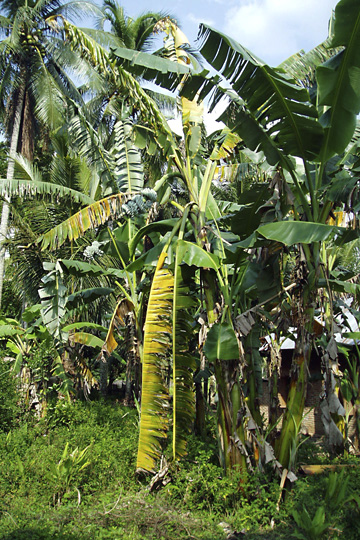
Blood disease | Banana
DISEASE: Blood disease
HOST: Banana (Musa sp.)
PATHOGEN: Ralstonia solanacearum species complex
PATHOGEN SYNONYM: Ralstonia solanacearum (Phylotype IV)
SOURCE: I. Buddenhagen
DISEASE: Drippy nut disease
HOST: Oak
Ooze from young twig inoculated with Brenneria quercina.
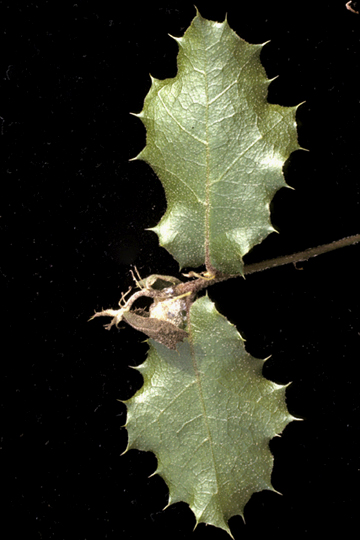
Drippy nut disease | Oak
DISEASE: Drippy nut disease
HOST: Oak (Quercus agrifolia)
PATHOGEN: Brenneria quercina
PATHOGEN SYNONYM: Erwinia quercina
SOURCE: M. Schroth
DISEASE: Drippy nut disease
HOST: Oak
Ooze from infected acorn. Copious ooze drips from infected acorns, leaving sticky spots on objects under tree canopy. Infections are associated with insect oviposit wounds.
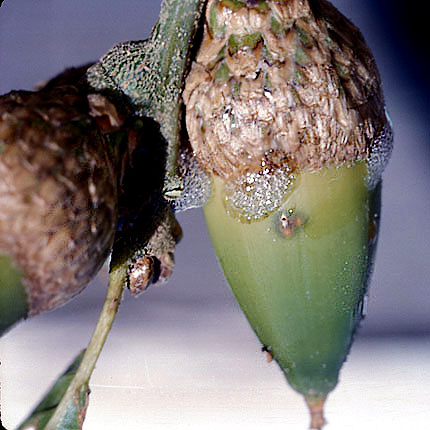
Drippy nut disease | Oak
DISEASE: Drippy nut disease
HOST: Oak (Quercus agrifolia)
PATHOGEN: Brenneria quercina
PATHOGEN SYNONYM: Erwinia quercina
SOURCE: M. Schroth
DISEASE: Tomato big bud
HOST: Tomato
Characteristic symptoms are swollen, apical stems and stunted leaves. Apical stems are generally thickened and assume a stiff and erect growth habit. Internodes are shortened and flower buds are greatly enlarged.
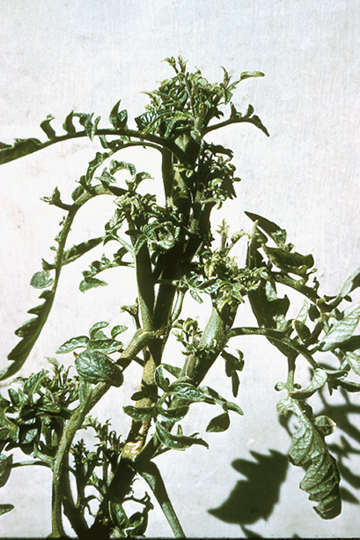
Tomato big bud | Tomato
DISEASE: Tomato big bud
HOST: Tomato (Lycopersicon esculentum)
PATHOGEN: 'Candidatus Phytoplasma asteris'
PATHOGEN SYNONYM: Phytoplasma Aster yellows group
SOURCE: D. Teakle
DISEASE: Tomato big bud
HOST: Tomato
Symptoms are enlarge sepals that do not separate. Flower buds stay green and do not develop into fruit. Leaves are small and chlorotic.
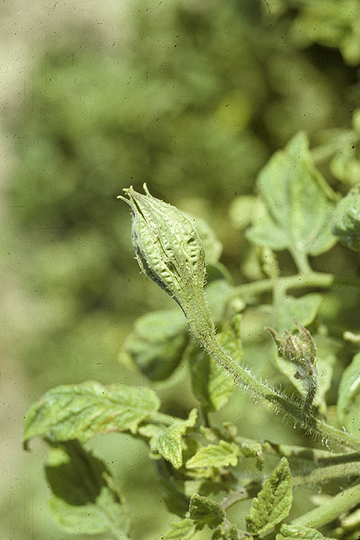
Tomato big bud | Tomato
DISEASE: Tomato big bud
HOST: Tomato (Lycopersicon esculentum)
PATHOGEN: 'Candidatus Phytoplasma asteris'
PATHOGEN SYNONYM: Phytoplasma Aster yellows group
SOURCE: S. Thomson
DISEASE: Tomato big bud
HOST: Tomato
Abnormal flower bud with greatly enlarged sepals. Sepals do not separate, fruit is not produced, and apical growth is upright.
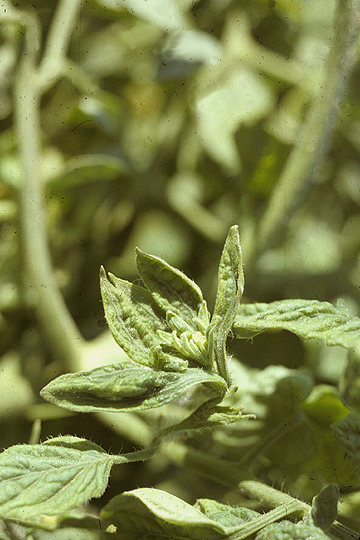
Tomato big bud | Tomato
DISEASE: Tomato big bud
HOST: Tomato (Lycopersicon esculentum)
PATHOGEN: 'Candidatus Phytoplasma asteris'
PATHOGEN SYNONYM: Phytoplasma Aster yellows group
SOURCE: S. Thomson


